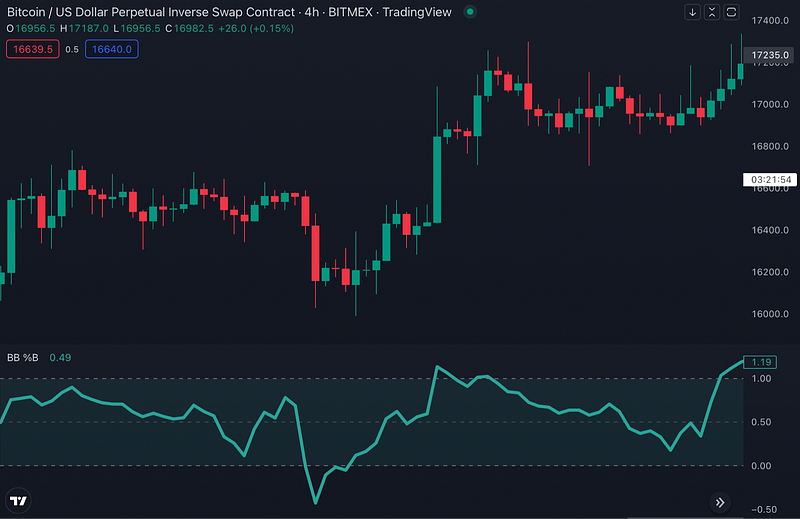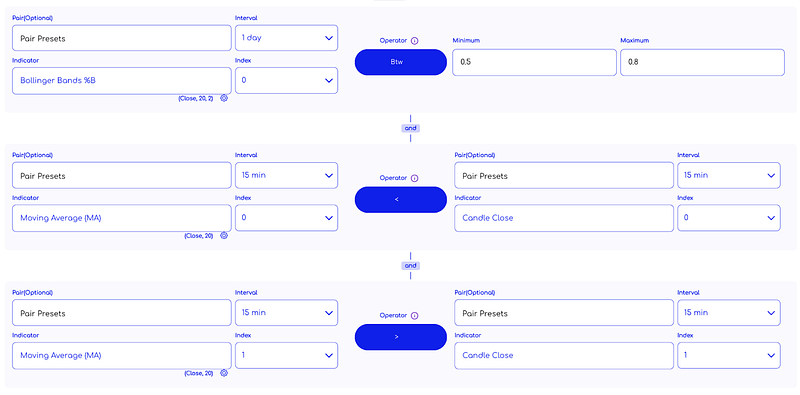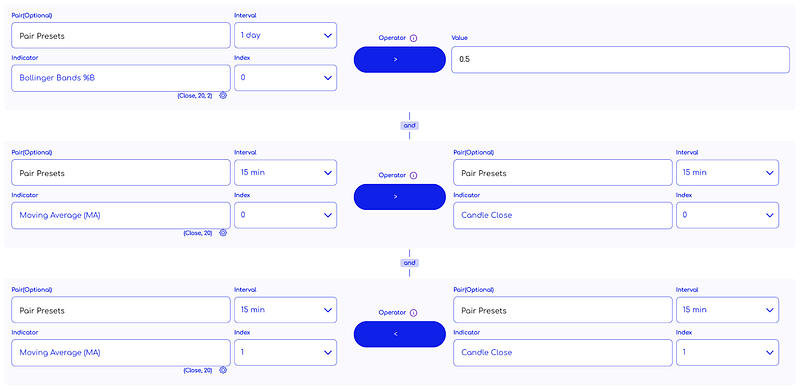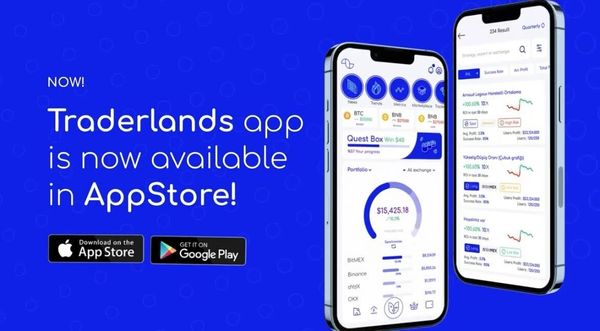Bollinger Bands Percent B Indicator
The Bollinger Bands Percent B Indicator is a very useful tool that can help you make better trading decisions. In this blog post, we will take a look at what the indicator is, how it works, and how you can use it in your trading.
Bollinger Bands are one of the most popular technical indicators used by traders and investors. The indicator is based on the concept of volatility and uses a moving average to plot upper and lower bands around the price. When prices are quiet, the bands contract; when prices are volatile, the bands expand.
The Bollinger Bands Percent B Indicator is a technical indicator that is used to measure market volatility. The indicator is based on the concept of Bollinger Bands, which are a type of moving average.
What is Bollinger Bands Percent B Indicator?
Bollinger Bands Percent B Indicator is an indicator that measures the Bollinger Bands and displays them as a percentage. The indicator can be used to identify overbought and oversold market conditions, as well as help, confirm price breakouts.
The Bollinger Bands are traditionally plotted at 2 standard deviations above and below a 20-period moving average, which provides a theoretical framework for identifying overbought and oversold conditions.
The Bollinger Bands Percent B Indicator takes this one step further by plotting the Bollinger Bands as a percentage of the current price. This makes it easier to compare market conditions across different timeframes and instruments.
The Bollinger Bands Percent B Indicator is calculated using the following formula:
Bollinger Bands Percent B = (Price — Lower Bollinger Band) / (Upper Bollinger Band — Lower Bollinger Band) * 100
The resulting number will be between 0 and 100, with readings above 80 indicating overbought conditions, and readings below 20 indicating oversold conditions.
Breakouts from the Bollinger Bands can also be confirmed using the indicator, with sustained moves above or below the upper or lower bands indicating a breakout in prices.

How to use Bollinger Bands Percent B Indicator?
Bollinger Bands %B Indicator is an indicator that is used to measure market volatility. It is a technical analysis tool that uses a formula to calculate the standard deviation of prices over a certain period.
The Bollinger Bands Percent B Indicator has two lines, one line representing the upper Bollinger Band and the other line representing the lower Bollinger Band.
These lines are plotted at a distance from the moving average line equal to the standard deviation multiplied by a certain number, usually 2. The Bollinger Bands Percent B Indicator is used to help traders identify when the market is overbought or oversold.
The Bollinger Bands Percent B Indicator can be used on any time frame, but it is most commonly used on daily charts. To calculate the Bollinger Bands Percent B Indicator, first, you need to calculate the standard deviation of prices over a certain period.
This period of time can be anything from 5 days to 200 days, but 20 days is the most common. Once you have calculated the standard deviation, you can then multiply it by 2 and add it to the moving average line.
This will give you the upper Bollinger Band. To calculate the lower Bollinger Band, simply subtract the standard deviation from the moving average line.
The Bollinger Bands Percent B Indicator can be used in conjunction with other technical indicators, such as support and resistance levels, Fibonacci levels, and price action patterns.
Support and Resistance Levels for Bollinger Bands Percent B
Bollinger Bands Percent B is a technical indicator that measures the relative position of the current price to the upper and lower Bollinger Bands. The indicator is displayed as a line on a separate chart below the main price chart.
The Bollinger Bands Percent B indicator can be used to identify support and resistance levels. When the price is close to the upper Bollinger Band, it is considered overbought, and when it is close to the lower Bollinger Band, it is considered oversold.
Support and resistance levels can be identified by looking for areas where the price has bounced off of the Bollinger Bands.
For example, if the price reaches the upper Bollinger Band and then starts to fall, this may be an indication that there is resistance at that level.
If the price reaches the lower Bollinger Band and then starts to rise, this may be an indication that there is support at that level.
The Bollinger Bands Percent B indicator can also be used to generate buy and sell signals. A buy signal occurs when the indicator moves from below 0% to above 0%.
This indicates that prices have moved from being oversold to being overbought. A sell signal occurs when the indicator moves from above 100% to below 100%. This indicates that prices have moved from being overbought to being oversold.
The biggest advantage of using Bollinger Bands Percent B is that it can help you stay in trends longer because it can help you identify when a trend is reversing.
How to create a trading strategy with Bollinger Bands Percent B
Bollinger Bands Percent B is a technical indicator that can be used to create a trading strategy. The indicator is based on the Bollinger Bands Percent (%B) indicator, which is a measure of the distance between the Bollinger Bands and the price.
The Bollinger Bands Percent B indicator is used to identify overbought and oversold conditions, as well as to signal potential trend reversals. The indicator can be used on all timeframes from intraday to daily charts.
To create a trading strategy with Bollinger Bands Percent B, we will use the following indicators:
- Bollinger Bands Percent B (%B)
- Relative Strength Index (RSI)
- moving average convergence divergence (MACD)
We will use the %B as our primary entry/exit signal, with the RSI and MACD providing confirmation.
Here are the steps for creating this Bollinger Band trading strategy:
1. Identify the market trend using a longer time frame chart (4 hours or daily).
2. Look for entries using the Bollinger Band %B on a shorter time frame chart (15 minutes). Enter long when %B crosses above 0.5 and enter short when %B crosses below 0.5.
3. Exit your trade when %B crosses back above or below 0.5 in the opposite direction of your original entry signal. You can also use other exit signals such as the RSI or MACD.
4. Place a stop loss just outside of the Bollinger Bands.
This Bollinger Band strategy can be used on any market or timeframe.
Bollinger Bands Percent B at Traderlands Strategy Creator Tool
You can start creating a strategy by selecting the “Bollinger Bands %B” indicator from the list. An example strategy is shown in the image below. You can use the Bollinger Bands Percent B indicator to create a strategy after doing your own research.
Enter Algorithm Rules You Can Add To Strategy Creator

Exit Algorithm Rules You Can Add To Strategy Creator

WARNING: The entry and exit strategies in the images are prepared ONLY for educational purposes to explain how indicators work. It does not guarantee any profit.
When creating an algorithmic trading strategy, a rule set is usually created by using more than one indicator.
Other Indicators can be used with the Bollinger Bands %B Indicator
The Bollinger Bands %B Indicator is a comprehensive indicator that can be used with many other indicators to better the performance of a trading strategy. Some other indicators that are commonly used with Bollinger Bands %B include:
• Relative Strength Index (RSI)
• Stochastic Oscillator
- MACD
TradingView: https://www.tradingview.com/chart/?solution=43000501971





